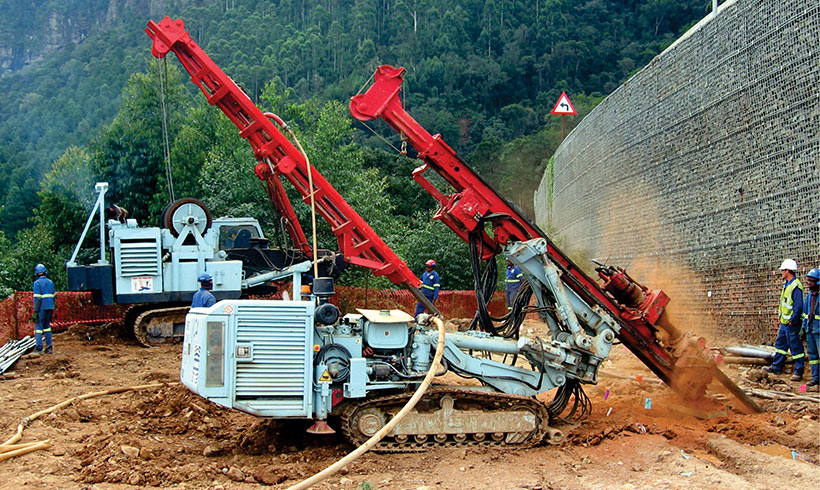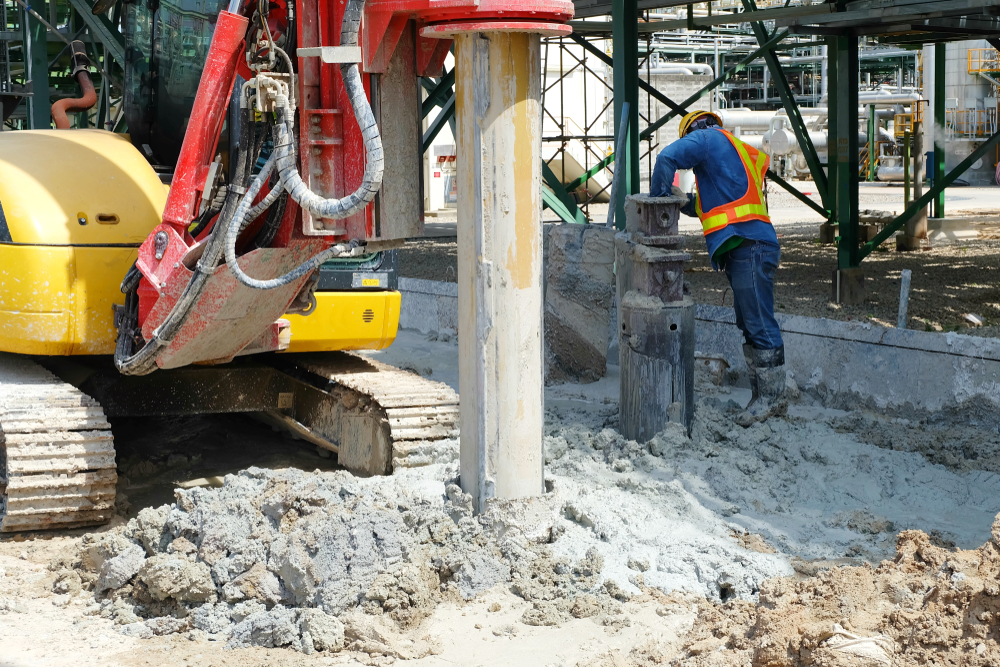Top Guidelines Of Specialized Geotechnical Engineering Solutions
Top Guidelines Of Specialized Geotechnical Engineering Solutions
Blog Article
The Buzz on Specialized Geotechnical Engineering Solutions
Table of ContentsSpecialized Geotechnical Engineering Solutions Fundamentals ExplainedSome Known Questions About Specialized Geotechnical Engineering Solutions.Specialized Geotechnical Engineering Solutions Fundamentals Explained3 Simple Techniques For Specialized Geotechnical Engineering Solutions
They perform site investigations, gather examples, execute laboratory tests, and assess information to evaluate the viability of the ground for building tasks. Based on their findings, geotechnical engineers supply suggestions for foundation style, incline security, retaining structures, and mitigation of geotechnical dangers. They team up with various other specialists, such as engineers, structural designers, and construction teams, to ensure that geotechnical considerations are integrated into the general job style and application.
Foundation Design: Geotechnical engineers play a vital function in creating structures that can securely support the intended structure. They evaluate the soil conditions and load requirements to determine the suitable foundation type, such as shallow structures (e.g., grounds), deep foundations (e.g., stacks), or specialized methods like soil improvement. They consider factors such as settlement limitations, birthing ability, and soil-structure interaction to create ideal foundation designs.
Our Specialized Geotechnical Engineering Solutions PDFs
Below are some sorts of geotechnical designers: Structure Engineer: Foundation designers concentrate on creating and evaluating structures for structures - Specialized Geotechnical Engineering Solutions. They examine the dirt conditions, tons needs, and website features to figure out the most appropriate structure kind and layout, such as shallow structures, deep structures, or specialized strategies like stack foundations
They perform area screening, gather samples, and analyze the accumulated data to identify the dirt buildings, geologic developments, and groundwater problems at a site. Geotechnical Instrumentation Designer: Geotechnical instrumentation designers focus on monitoring and gauging the habits of dirt, rock, and frameworks. They mount and preserve instrumentation systems that keep an eye on variables such as dirt settlement, groundwater degrees, incline motions, and structural displacements to examine efficiency and give very early cautions of prospective concerns.
In the office setting, geotechnical engineers make use of specialized software tools to carry out calculations, produce designs, and assess data. Specialized Geotechnical Engineering Solutions. They prepare reports, testimonial task specs, connect with customers and staff member, and coordinate task tasks. The office setup gives a favorable setting for research, analysis, and cooperation with other specialists associated with the task
They regularly go to task sites to carry out website examinations, assess geotechnical conditions, and collect information for analysis. These brows through involve traveling to various places, sometimes in remote or tough terrains. Geotechnical engineers may do dirt sampling, conduct tests, and display building activities to make sure that the geotechnical elements of the job are being applied appropriately.
The Specialized Geotechnical Engineering Solutions Diaries
Geotechnical designers additionally function in specialized geotechnical laboratories. Geotechnical laboratory engineers function thoroughly in these settings, managing testing equipment, running instruments, and videotaping information.
Preserving Wall surfaces: Developing wall surfaces that keep back soil to avoid landslides and offer check my source stability on sloped terrains. Embankments and Earthworks: Creating embankments for roads, railways, and dams to ensure they remain steady under stress and anxiety. The mining market relies greatly on geotechnical engineering to guarantee the security and longevity of its operations.
With this in mind, we have made our program to prepare trainees for success. The Geotechnical official website Design program at the University of Delaware uses chances for innovative study and research study in: Dirt and rock auto mechanics Soil-structure interaction Constitutive modeling Computational geomechanics Structure and planet frameworks engineering Ground enhancement Incline stability and landslide stablizing Liquefaction of dirts and quake design Research laboratory characterization of geomaterials and dirt reinforcement Environmental geotechnics Offered the strong need for enhancement to our nation's infrastructurethe American Society of Civil Engineers provided the united state
Geotechnical design is a branch of civil design; however, it involves utilizing clinical methods and concepts to accumulate and interpret the physical residential or commercial properties of the ground. Geotechnical engineers are entailed in all phases of the style of structures, from idea to building. Their job is vital in the layout these details and planning process as they evaluate the integrity of dirt, clay, silt, sand, and rock, before building and construction starting.
The 7-Second Trick For Specialized Geotechnical Engineering Solutions
This is adhered to by a ground investigation based upon the findings of the desk research study and includes test pitting and sampling to discover any kind of possible concerns. Geotechnical designers work within multidisciplinary groups, sustained by intermediate and jr engineers as well as by CAD service technicians. As a senior geotechnical designer on a hydro plant task, jobs may include participating in technical testimonials (e.g., peer reviews), tailings clog assessments, dam security reviews, and other studies connected to the layout and building of mine waste centers.
While some experts are experts exclusively in geotechnics, others may function under titles like engineering geologist or ground designer within similar abilities. As a geotechnical designer, you'll require to: build and maintain partnerships with customers and various other professionals associated with the site, throughout each projectmaintain safety and security criteria on website bear in mind price ramifications when you make recommendationsstudy geological maps and aerial photographs from a range of resources and from different time periodsexamine construction plans to see just how practical they are based on your understanding of the siteinvestigate risks or geological threats for the sitesearch for ecologically sensitive functions, such as landfill beginning to establish factual and expository ground modelsplan field investigationsdrill and analyse examples of bedrock, soil, groundwater and added materials supervise various other experts on sitesolve technical concerns as they occur, such as unexpected frameworks at drill sitesmonitor conditions throughout and after building to make certain frameworks are stable in the brief and long termadd data collected on website to your initial researchcreate geotechnical estimations, drawings, and 2 or three-dimensional computer system designs interpreting the datamake referrals about the suggested use the website.
There are great deals of possibilities to fulfill new individuals, as you'll deal with a series of professionals at every website. The work can be demanding as you may be accountable for the security of others while on website. There is also a high level of financial responsibility, as the recommendations you make can have severe cost ramifications.

Report this page